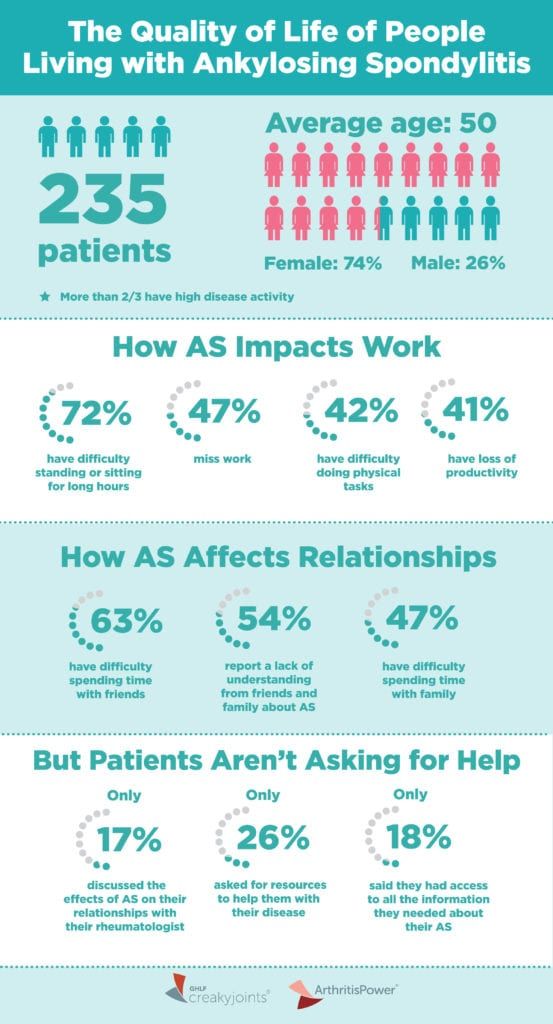Ankylosing Spondylitis: Symptoms, Causes & What to Expect
November 10, 2022
Ankylosing Spondylitis
Ankylosing spondylitis, also commonly termed as “axial spondylarthritis” or AS, is a disease that affects the spine. It causes chronic inflammation of the sacroiliac joints (SI) located at the lower back of the spine.
According to the leading ankylosing spondylitis UK organisation, the National Axial Spondylarthritis Society, 1 in every 200 people in the UK suffers from this condition. The presence of the disease is typically confirmed with an MRI scan for ankylosing spondylitis.
Ankylosing Spondylitis: Signs, Symptoms, And Triggers
Ankylosing spondylitis is a systemic disease which tends to worsen and spread to other parts of the body over time. The condition, considered to be a form of arthritis, is caused by the fusing together of the vertebrae, more specifically involving the SI joints which are made up of the bones that connect your spine to your pelvis. The disease, however, has been found to affect other parts of the body as well.
An ankylosing spondylitis MRI scan may show the underlying causes of severe pain, stiffness, and discomfort involving the spine and, often, involving inflammation in other parts of the body, including the following:

Image Credits: creakyjoints
- Eyes: People who develop AS are often also diagnosed with uveitis, an eye inflammation that causes redness and pain on one or both eyes.
- Shoulders: Loss of shoulder mobility is common among patients suffering from AS.
- Knees: An x-ray may be used as an ankylosing spondylitis test to check if the condition has affected knee movement.
- Heart: Between 2 to 10% of all patients who have this condition develop heart diseases.
- Lungs. An ankylosing spondylitis MRI scan will show any restriction caused to the lungs caused by abnormal changes to the spine.
- Kidneys: Nerve damage may affect the healthy functioning of the kidneys and damage sexual function.
- Skin: As patients tend to develop psoriasis.
Ankylosing spondylitis symptoms typically become manifest between late adolescence and early adulthood, roughly occurring in people younger than 40 years old. More men are diagnosed with the disease and they often suffer more severe symptoms compared to women who have it. In general, however, people who have AS may manifest very different symptoms.
There has yet to be an agreement in the medical community about what causes Ankylosing spondylitis pain and, possibly, structural changes to the spine. For now, this is what doctors know:
- Majority of AS patients produce a genetic marker known as the protein, HLA-B27. However, not all people who have this marker eventually develop AS.
- AS tends to run in families.
- Approximately all patients will complain of back pain that may improve with exercise but not with rest.
How Do You Know If You Have Ankylosing Spondylitis?
Experiencing chronic back pain is just one of the signs of AS. However, for a proper diagnosis of this condition, the attending doctor will likely request several tests to be done, apart from a routine physical exam. AS tends to affect several structures and organs of the body, and are correlated with several conditions. Among the diagnostic tests, you may have to undergo to either rule in or rule out AS includes the following:
- Blood work to determine the presence of HLA-B27
- Imaging using x-ray to look for structural changes in the spine associated with AS, including the “squaring” or the loss of natural curvature of the spine, bone deposition, and other signs of calcification of the spine.
- Imaging using ankylosing spondylitis MRI spine to observe inflammation and other changes in soft tissues around the spine.
PAA:
What is the best treatment for ankylosing spondylitis?

Treatment for ankylosing spondylitis is focused on pain management and physical therapy. Patients are typically put on a daily medication involving non-steroidal anti-inflammatory drugs (NSAID) to manage the pain, and recommended to follow an exercise routine to maintain mobility. As of today, there is no known cure for AS. Although, ankylosing spondylitis prognosis can vary by a large degree among people who are affected. Managing correlated diseases is also a major goal in improving the health and quality of life of an AS patient. That is why, it isn’t unusual for an AS patient to consult with several doctors with varying specialisations, such as an ophthalmologist or pulmonologist, simultaneously. This depends on what symptoms and complications are developed by the patient.
What are the early symptoms of spondylitis?
Most people who are eventually diagnosed to have AS complain of chronic pain on the lower back, stiffness and difficulty moving or twisting the back, pain on the buttocks, and unexplainable fatigue. Depending on the correlated diseases that an AS patient may develop, other complaints may also include, pain in the eyes, difficulty breathing, difficulty urinating or lack of bowel control, and difficulty of getting to sleep.
Can you see ankylosing spondylitis on MRI?
Yes. An MRI scan of the spine can be used to establish the presence of sacroiliitis or inflammation of the vertebrae, as well as observe bone deposition happening on this part of the spine. During the latter stages of AS, an MRI scan can also show the fusion of the vertebrae, a condition that causes significantly more difficult and restricted movements.
Will ankylosing spondylitis show on MRI?
Yes. An MRI scan for AS can provide evidence that a person has it. This imaging technique facilitates the accuracy of diagnosis whether in the early or late stages of developing AS. In fact, once AS has been established, periodic MRI scanning will likely be ordered to monitor how the disease progresses and the extent it has spread to the spine as well as to other parts of the body.
References:
National Axial Spondylarthritis Society. What is AS? A short video. Link:
https://nass.co.uk/about-as/new-to-as/
Access Date: 18 May 2020
Will R, Kennedy G, Elswood J, et.al. Ankylosing spondylitis and the shoulder: commonly involved but frequently disabling. J Rheumatology. 2000 Jan;27(1): 177-82. Link:
https://www.ncbi.nlm.nih.gov/pubmed/10648036
Access Date: 18 May 2020
Ozkan, Y. Cardiac involvement in Ankylosing Spondylitis. J Clin Med Res. 2016 Jun; 8(6): 427–430 Published online 2016 May 25. DOI:
10.14740/jocmr2488w
Link:
https://www.ncbi.nlm.nih.gov/pmc/articles/PMC4852774/
Access Date: 18 May 2020
Wenker KJ and Quint JM. Ankylosing Spondylitis. Treasure Island (FL): StatPearls Publishing; 2020 Jan
https://www.ncbi.nlm.nih.gov/books/NBK470173/
Access Date: 18 May 2020









